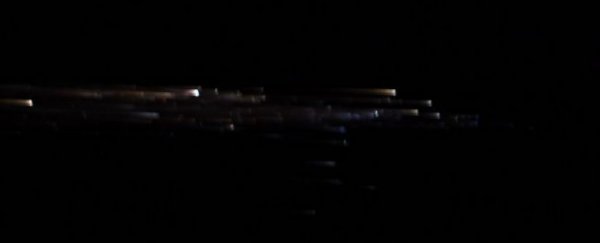Astronauts on board the International Space Station (ISS) have to do just about everything for themselves. Living within this constantly orbiting laboratory, they're not only crew members, they're also plumbers, janitors and housekeepers.
Just last week, in fact, the team of six astronauts currently on board began a month-long chore that requires taking their trash out and unloading new supplies from Earth.
Making room for a fresh Russian resupply rocket, called Progress 73, astronauts were forced to say goodbye to their former cargo vessel, Progress 72.
Four months before, this payload had arrived from Earth carrying 3.7 tons of supplies and gear, including oxygen and air, water, and spare parts.
Now that its main mission was done, there was one last thing the vessel needed to do. On Monday, after filling the craft with trash and discarded gear, astronauts undocked Progress 72 and sent it hurtling back to Earth.
As the vessel plunged into our planet's atmosphere, ISS expedition 59/60 flight engineer Nick Hague caught the fiery incineration in action.
"Say goodbye to Progress 72 today to make room for 73P showing up on Wednesday," tweeted Hague on Monday.
"Caught this shot of it during reentry. It looked like a big firework that lasted minutes – flickering, sparking, and pulsing with brightness before it faded into the darkness."
Said goodbye to Progress 72 today to make room for 73P showing up on Wednesday. Caught this shot of it during reentry. It looked like a big firework that lasted minutes – flickering, sparking, and pulsing with brightness before it faded into the darkness. pic.twitter.com/Pfs98eTKPp
— Nick Hague (@AstroHague) July 29, 2019
Two days later, the un-piloted Russian Progress 73 cargo ship took its place, just hours after it was launched from Earth.
All this may sound a bit crude, but according to NASA, so-called "destructive reentry" is a perfectly safe way of destroying ISS trash. Astronauts on board have been taking out their waste this way for years, and the whole thing is quite the game of Tetris.
"Something big or heavy being launched on one vehicle means less available mass for other items," explains NASA ebook The International Space Station: Operating an Outpost in the New Frontier.
"Program personnel put forth considerable effort analysing the stowage configuration throughout the increment based on the visiting vehicle traffic plan along with the expected trash generation and disposal plan."
Of course, NASA is always looking to improve its methods. Last year, in partnership with NineSigma, NASA announced a crowdsourcing challenge to find new ideas for recycling in space.
Currently, the waste disposal method takes up room; additionally, as it may sit there for months, it puts the health of astronauts at risk. Plus, returning the trash to Earth or incinerating it in the atmosphere won't be feasible options for missions beyond Earth's low orbit.
"Along with a commitment to explore and pioneer, comes a commitment to use the resources at our disposal fully, efficiently and responsibly," Anne Meier, lead research engineer at NASA's Kennedy Space Center, stated last year.
"Recycling in space and repurposing all or as much of the mass that we launch up to space is key for sustainable long-duration space travel. Waste conversion and volume reduction will free up volume for more science, more exploration, and is the heart of closing the loop on human spaceflight, and logistics reduction and reutilisation."
